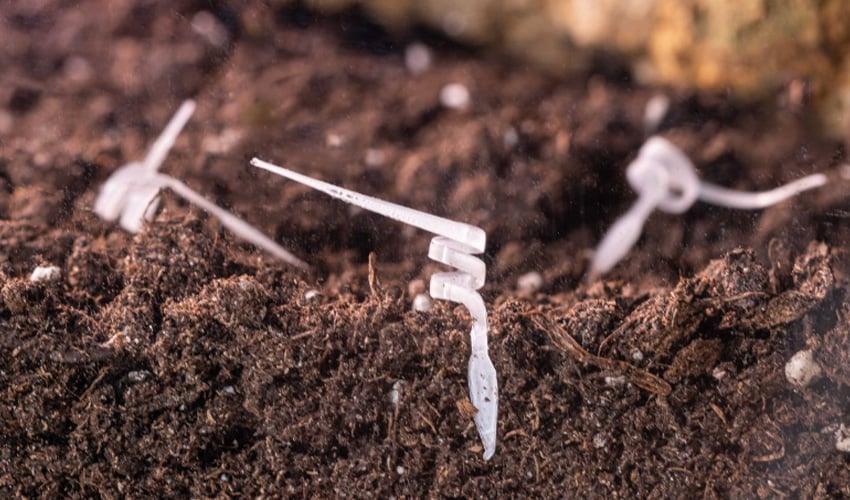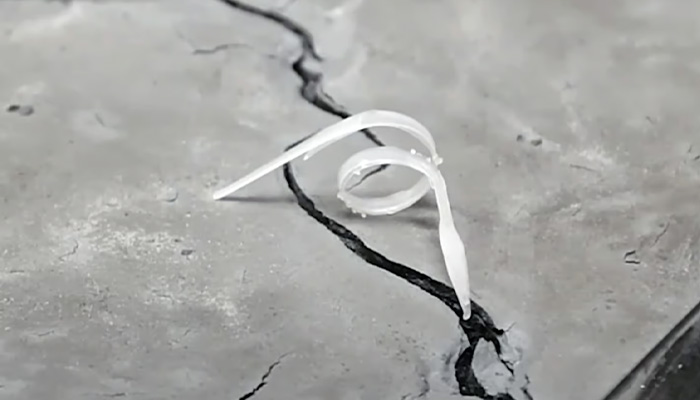The I-Seed: a 4D Printed Robot Capable of Analyzing Air and Soil Quality

In the Italian Institute of Technology (ITT), there is a bio-inspired robotics laboratory whose mission is to design and develop new innovative solutions, while drawing inspiration from nature. In 2021, they launched the I-Seed, a project to develop a new generation of flexible, autonomous and biodegradable miniaturized robots using 4D printing. These robots are inspired by plant seeds. By merging scientific research and technological design, the laboratory aims to analyze and monitor air and topsoil environments, the part of the soil where plants find the nutrients necessary for their survival.
The creation of these biodegradable robots is in collaboration with the University of Trento, Italy. According to the researchers in charge of the project, the robot-seed is able to determine the temperature and humidity of the soil and air. It would also be able to see the presence of pollutants such as mercury, or the levels of CO2 in the atmosphere. The first I-Seed is inspired by the hygromorphic structure of a South African geranium, the pelargonium appendiculatum.

The robot seed changes its morphology according to the humidity (photo credits: Italian Institute of Technology)
An Autonomous and Biodegradable Seed Robot
This plant operates in a precise manner. When the environmental conditions are right, its seeds break off. Their hygroscopic properties, that is to say the absorption of moisture, allow them to change shape and move to explore and penetrate the ground. This helps to promote the germination of the plant. In order to design the seed robot, the researchers carried out a morphometric, histological and biomechanical investigation of the pelargonium appendiculatum to predict its behaviors. Next, the researchers leveraged the biomechanical specifications to model and fabricate the seed-like robot. As previously explained, the researchers claim to have made the robot using 4D printing.
They used the FDM process with biodegradable polymers based on polycaprolactone, a polyester used in the production of specialty polyurethanes. This material is known for its water resistance. The extrusion solution was coupled with a technique of electrospinning hygroscopic fibers composed of a polyethylene oxide (PEO) and a core of cellulose nanocrystals. According to the researchers, artificial and natural seeds have comparable geometric dimensions and biomechanical performance. This project may therefore make it possible to better analyze and preserve the soil. “These energy-autonomous robots will be used as cordless, battery-less tools for surface soil exploration and monitoring. This bio-inspired approach has allowed us to create inexpensive instruments that can be used to collect in situ data with high spatial and temporal resolution, especially in remote areas where no monitoring data is available,” said Luca Cecchini, PhD student at IIT in collaboration with the University of Trento and first author of the study. To learn more about this robot seed, a research article has been published in the journal Advanced Science. Check it out HERE.
What do you think of the I-seed? Let us know in a comment below or on our LinkedIn, Facebook, and Twitter pages! Don’t forget to sign up for our free weekly Newsletter here, the latest 3D printing news straight to your inbox! You can also find all our videos on our YouTube channel.
*Cover photo credits: Italian Institute of Technology






